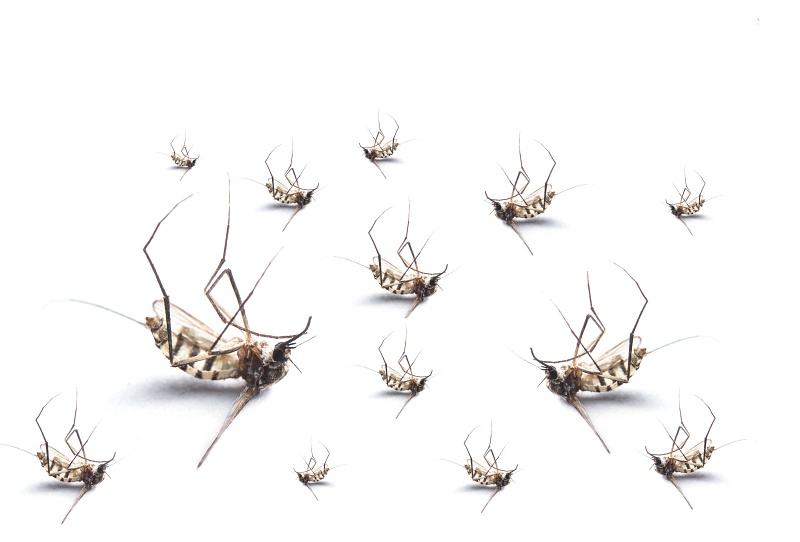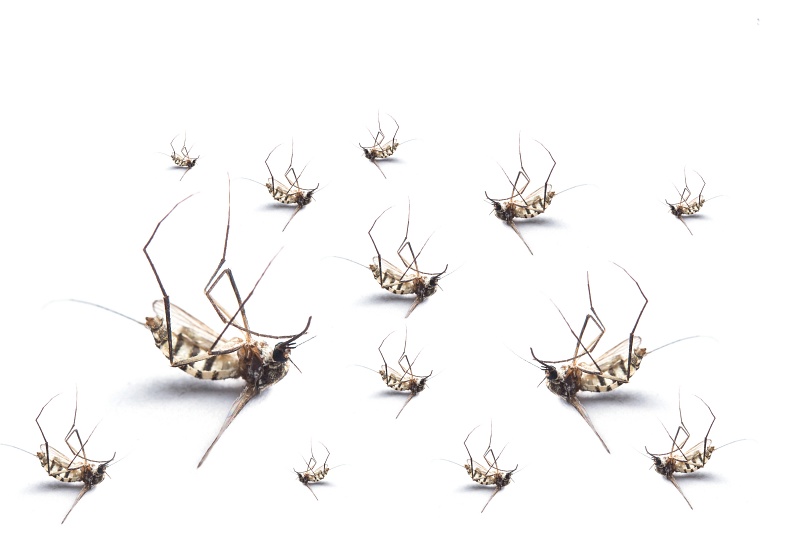
Understanding Mosquito Behavior: Exploring the Factors that Influence Mosquito Infestations
Mosquito infestations can be influenced by a variety of factors, ranging from environmental conditions to human activities. One important factor is the availability of suitable breeding sites for mosquitoes. These insects require stagnant water to lay their eggs and complete their life cycle. Areas with standing water, such as ponds, ditches, and even discarded containers, can serve as ideal breeding grounds for mosquitoes. Additionally, the presence of vegetation and natural moisture, such as swamps and marshes, can also contribute to higher mosquito populations.
Another factor that influences mosquito infestations is the availability of preferred hosts for blood meals. Female mosquitoes require blood to nourish their eggs, and they have specific preferences for certain animals, including humans. Factors such as the abundance and accessibility of hosts can play a significant role in determining the density of mosquito populations. Human activities that increase the proximity of humans and mosquitoes, such as urbanization and the establishment of new habitats, can further contribute to higher infestation levels. Understanding these factors that influence mosquito infestations can help scientists and communities develop effective strategies for control and prevention.
The Evolution of Mosquito Control Methods: From Traditional Practices to Technological Innovations
In the battle against mosquito-borne diseases, the evolution of mosquito control methods has been a fascinating journey. It all began with traditional practices that aimed to minimize mosquito populations and their potential for transmitting diseases. These practices included the use of insecticidal sprays, larvicides, and physical barriers like bed nets and screens. While these methods have proven effective to some degree, they often require manual labor, are time-consuming, and may have negative impacts on the environment.
However, with the advent of technological innovations, mosquito control has taken a giant leap forward. Scientists and researchers have developed a wide range of sophisticated tools and strategies to combat these disease-carrying insects. From advanced surveillance techniques and data analytics to innovative traps and repellents, technology has revolutionized the way we approach mosquito control. These advancements have not only made the process more efficient and precise but have also significantly reduced the use of harmful chemicals, minimizing the environmental impact.
Leveraging Data and Analytics: How Scientists are Using Technology to Track and Predict Mosquito Populations

As scientists strive to better understand mosquito behavior and predict their populations, the use of data and analytics has become increasingly important. By leveraging technology, researchers are able to collect and analyze vast amounts of information, ranging from weather patterns to mosquito breeding sites. This wealth of data allows them to track mosquito populations in real-time and make accurate predictions about their future behavior.
One way scientists are utilizing data and analytics is through the use of mosquito traps equipped with sensors. These traps capture mosquitoes and collect valuable information about their species, abundance, and infection rates. By analyzing this data, researchers can identify areas at risk of mosquito-borne diseases and implement targeted control measures. In addition, by combining trap data with weather data and other relevant factors, scientists can create models that accurately predict mosquito populations, helping communities better prepare for potential outbreaks and allocate resources accordingly.
Innovative Traps and Repellents: Exploring the Latest Technological Advances in Mosquito Control
Mosquitoes are a common nuisance that can ruin outdoor activities and pose significant health risks. In recent years, there have been remarkable advancements in the development of innovative traps and repellents to combat this problem. These technological breakthroughs offer new, effective ways to control mosquito populations and reduce the spread of diseases.
One of the latest advancements is the use of mosquito traps that utilize light and heat to attract and capture these tiny pests. These traps are designed to mimic human body heat and emit carbon dioxide, which serve as powerful attractants for mosquitoes. Once lured in, they are either trapped or exterminated, depending on the trap’s mechanism. These traps are not only effective in reducing mosquito populations but are also environmentally friendly, as they don’t rely on harmful chemicals or pesticides.
Genetic Modification: How Scientists are Using Technology to Alter Mosquito DNA and Reduce Disease Transmission
As technology advances, scientists are using genetic modification to target mosquitoes and reduce the transmission of diseases. By altering the DNA of these disease-carrying insects, researchers hope to limit their ability to spread illnesses such as malaria, dengue fever, and Zika virus. This innovative approach involves introducing genetic modifications that can either reduce the mosquito population or make the insects more resistant to disease.
One method of genetic modification involves introducing genes that will render the mosquitoes incapable of transmitting diseases. Scientists have identified specific genes that, when inserted into the mosquito’s DNA, prevent the pathogen from being transmitted during feeding. This approach shows promise in reducing the incidence of mosquito-borne diseases, as it disrupts the lifecycle of the pathogen within the mosquito population. Furthermore, these genetic modifications are designed to be passed on to future generations, potentially leading to a long-term reduction in disease transmission. However, ethical considerations and environmental impacts need to be carefully evaluated before implementing these strategies on a larger scale.
Drone Technology: Revolutionizing Mosquito Control through Aerial Surveillance and Targeted Treatments
Unmanned aerial vehicles, commonly known as drones, have emerged as a game-changer in the field of mosquito control. These technological marvels are revolutionizing the way we track and tackle mosquito populations. Equipped with high-resolution cameras and advanced sensors, drones can efficiently survey large areas of land, identifying potential breeding sites and areas with high mosquito activity. By providing real-time data, drones enable mosquito control teams to prioritize their efforts and implement targeted treatments, maximizing the impact of their interventions.
One of the key advantages of drone technology is its ability to reach inaccessible or hazardous areas that traditional surveillance methods cannot. Drones can navigate through dense forests, marshlands, and other challenging terrains, mapping mosquito habitats that would otherwise go unexplored. This not only saves valuable time and resources, but it also allows for a more comprehensive understanding of mosquito behavior and migration patterns. With this knowledge, mosquito control teams can strategize their approach and deploy treatments precisely where they are most needed, effectively reducing the mosquito population and minimizing the risk of mosquito-borne diseases.
Smart Cities and Mosquito Control: How Technology is Being Integrated into Urban Planning to Combat Mosquito-Borne Diseases
Smart cities are utilizing technology to enhance urban planning strategies in the fight against mosquito-borne diseases. By integrating advanced surveillance systems, sensor networks, and data analytics, city officials are gaining insights into mosquito population dynamics and are better able to implement targeted control measures. These technological advancements are revolutionizing the way cities approach mosquito control, resulting in more effective and efficient strategies.
One key aspect of integrating technology into urban planning is the use of advanced surveillance systems. These systems employ cameras, sensors, and drones to monitor mosquito breeding areas, identify high-risk areas, and track the movement of mosquito populations. By collecting real-time data, city officials can make informed decisions about mosquito control interventions, such as targeted spraying or larviciding. This proactive approach allows for a more precise allocation of resources, reducing the spread of mosquito-borne diseases and minimizing the impact on the environment.
Citizen Science Initiatives: Engaging the Public in Mosquito Control Efforts through Technology and Education
Citizen Science initiatives have emerged as a powerful tool in engaging the public and harnessing their collective knowledge in mosquito control efforts. Through the use of technology and education, these initiatives empower individuals to actively contribute to monitoring and reducing mosquito populations. By involving citizens in data collection and analysis, scientists are able to gather valuable insights on mosquito habitats, breeding grounds, and trends in infestations. This collaborative approach not only enhances our understanding of mosquito behavior but also provides a platform for knowledge-sharing and awareness-building among communities.
One of the key advantages of Citizen Science initiatives is their ability to leverage technology for effective mosquito control. Smartphone applications and online platforms allow participants to report mosquito sightings, providing real-time data that can be used to map and track infestations. This information is then used to implement targeted control measures such as targeted spraying or habitat modification. Furthermore, educational resources and interactive tools provided through these initiatives enable individuals to learn about mosquito biology, prevention strategies, and the importance of public health. By empowering citizens with knowledge and tools, Citizen Science initiatives foster a sense of ownership and responsibility, encouraging active participation in mosquito control efforts.
The Science of Mosquito Control: How Technology is Changing the Game was first seen on https://propestcontrolservices.com/





More Stories
The Role of Chimney Inspections in Homebuying
The Rise of Bed Bugs: Why Are They Making a Comeback?
Chimney Masonry Repair 101: Restoring Beauty and Functionality